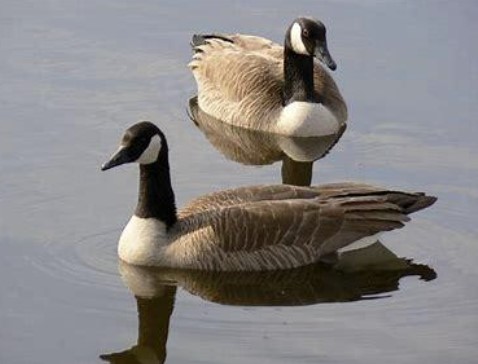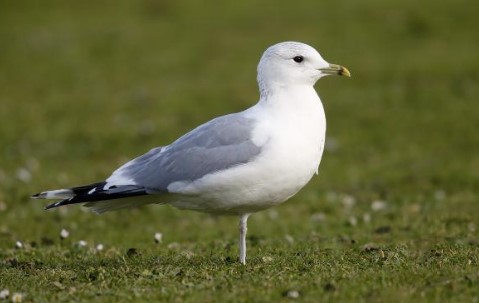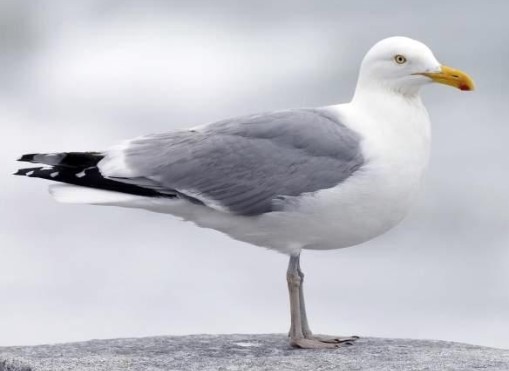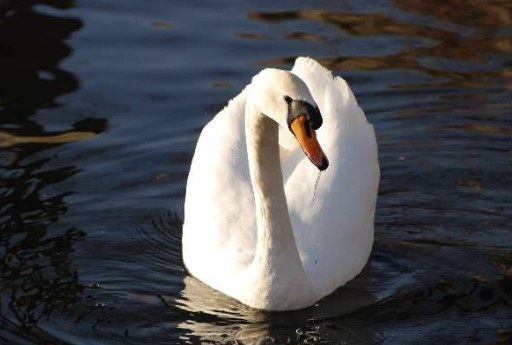Turn on Javascript


This website uses Javascript


Turn on Javascript
This website uses Javascript
Hello. Is the website looking too large? Click on the button below to make it a better size
When the new window is open, you can close this window
Canada Goose
The Canada goose (Branta canadensis) is a large wild goose with a black head and neck, white cheeks, white under its chin, and a brown body. It is native to the Arctic and temperate regions of North America, and its migration occasionally reaches northern Europe. It has been introduced to the United Kingdom, Ireland, Finland, Sweden, Denmark, New Zealand, Japan, Argentina, Chile, and the Falkland Islands. Like most geese, the Canada goose is primarily herbivorous and normally migratory; it tends to be found on or close to fresh water.
Extremely adept at living in human-altered areas, Canada geese have established breeding colonies in urban and cultivated habitats, which provide food and few natural predators. The success of this common park species has led to its often being considered a pest species because of its excrement, its depredation of crops, its noise, its aggressive territorial behaviour toward both humans and other animals, and its habit of begging for food (caused by human hand feeding).


Common Gull
Adult common gulls are 40–46 cm (16–18 in) long, noticeably smaller than the herring gull and slightly smaller than the ring-billed gull. It is further distinguished from the ring-billed gull by its shorter, more tapered bill, which is a more greenish shade of yellow and is unmarked during the breeding season. The body is grey above and white below. The legs are greenish-yellow. In winter, the head is streaked grey and the bill often has a poorly defined blackish band near the tip, which is sometimes sufficiently obvious to cause confusion with ring-billed gull. They have black wingtips with large white "mirrors". Young birds have scaly black-brown upperparts and a neat wing pattern, and grey legs. They take two to three years to reach maturity. The call is a high-pitched "laughing" cry.
Herring Gull
The herring gull (Larus argentatus or European herring gull) is a large gull (up to 26 inches or 66 cm long). It is the most abundant and best known of all gulls along the shores of Western Europe. It breeds across Northern Europe, Western Europe, Scandinavia and the Baltic states.
Adults have light grey backs, white under parts, and black wing tips with white 'mirrors'. Their legs are pink, with webbed feet and they have heavy, slightly hooked bills marked with a red spot.
Some herring gulls, especially those resident in colder areas, migrate further south in winter, but many are permanent residents, e.g. in the British Isles, Iceland, or on the North Sea shores. European herring gulls are also abundant around inland garbage dumps, and some have even adapted to life in inland cities.


Black-Headed Gull
The black-headed gull (Chroicocephalus ridibundus) is a small gull that breeds in much of the Palearctic including Europe and also in coastal eastern Canada. Most of the population is migratory and winters further south, but some birds reside in the milder westernmost areas of Europe. Small numbers also occur in north-eastern North America, where it was formerly known as the common black-headed gull.
The black-headed gull displays a variety of compelling behaviours and adaptations. Some of these include removing eggshells from one's nest after hatching, begging co-ordination between siblings, differences between sexes, conspecific brood parasitism, and extra-pair paternity. They are an overwintering species, found in a variety of different habitats
Mute Swan
The mute swan (Cygnus olor) is a species of swan and a member of the waterfowl family Anatidae. It is native to much of Eurosiberia, and (as a rare winter visitor) the far north of Africa. It is an introduced species in North America, home to the largest populations outside of its native range, with additional smaller introductions in Australasia and southern Africa. The name "mute" derives from it being less vocal than other swan species. Measuring 125 to 160 cm (49 to 63 in) in length, this large swan is wholly white in plumage with an orange beak bordered with black. It is recognizable by its pronounced knob atop the beak, which is larger in males.

